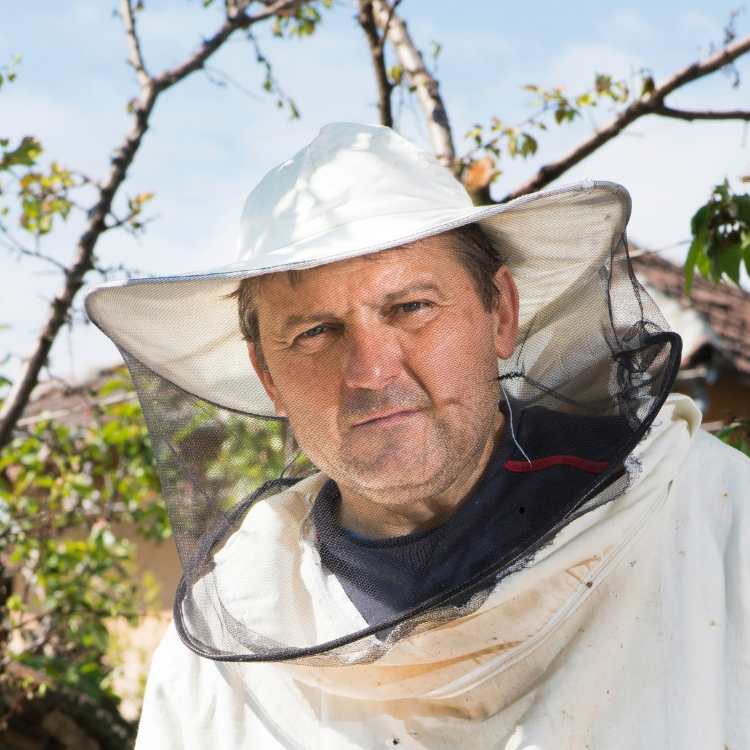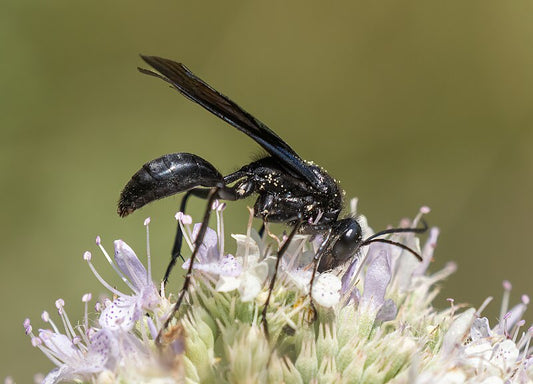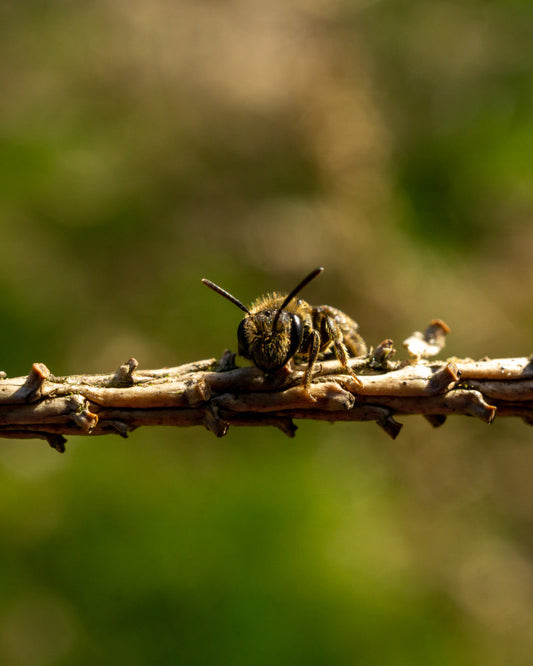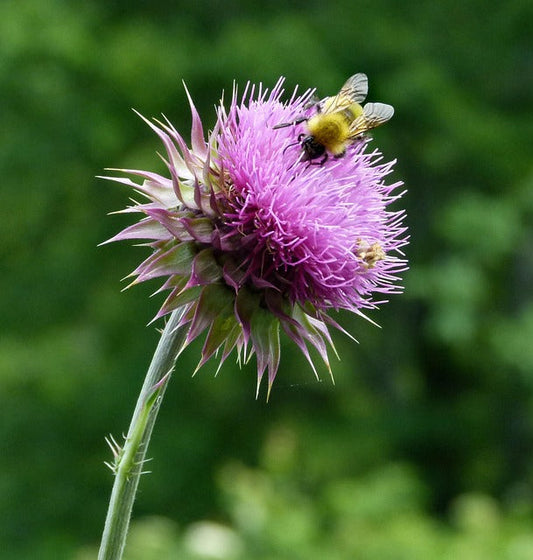Step outside on a warm morning in Tennessee, and you are bound to hear it. That low, steady hum in the grass and around the garden is surely not missable. It is not just the sound of summer. That is the sound of bees in Tennessee, working with the flowers, pollinating the crops and keeping the entire summer carnival running. Most people think of honeybees, and sure, they are super important. But they are just the tip of the hive. Tennessee is home to a wide range of native bee species, some solitary, some bright and flashy, others quiet and subtle, but all equally important. Here are five of the most important native species of bees in Tennessee that you need to know about.
Common species of bees in Tennessee
Agapostemon Sweat Bee
The Agapostemon Sweat Bee is one of the flashiest native bees in Tennessee. The metallic green shade of the head and thorax is very hard to miss. Sometimes, you also see the metallic hue paired with a striped yellow and black abdomen.
These bees:
- Nest in the ground, often in sandy or bare spots
- Are most active from spring through fall
- Love composite flowers like coneflowers, sunflowers and asters
- Are not aggressive and rarely sting
- Work alone without a colony
Despite being tiny (just 4 - 12 mm), Agapostemon sweat bees are fast and efficient foragers. Last time I was in Tennessee, I saw them zipping from flower to flower without any wasted motion. A good reminder that some of the best pollinators aren’t the ones making our honey.

American Mourning Bee
The American mourning bee, or Melecta pacifica, is a quiet worker that can be easy to overlook. It has got a fuzzy, dark brown to black body with some dusty yellow markings. A very unassuming insect buzzing through your garden. It doesn’t want any attention.
Here’s what to know about them:
- They nest solo, not in hives
- Their coloring helps them camouflage into dry soil and leaf litter
- They are small but not tiny. Usually just above 12 mm
- They prefer dry, open spaces and sunny patches
- They are quick fliers, rarely staying still
These are not the typical bees you will find clinging to a lavender bloom in your garden. Last I spotted one buzzing over a dry patch of earth near a sidewalk. Among all the other native bee species in Tennessee, this one might just be the most underappreciated one.

American Mourning Bee
Brown-belted Bumble Bee
If you are growing a tomato plant in your garden, chances are you owe a debt to the brown-belted bumble bee (Bombus griseocollis). These bees are the heavy lifters of the community. Big, fuzzy, and striped with black, yellow and a distinctive brown band, they are a very common sight in both gardens and meadows in Tennessee.
You can spot them by:
- Their thick bodies (9 - 21 mm) and loud buzz
- Their habit of nesting underground in abandoned rodent holes
- Their use of buzz pollination to shake the pollen off tough flowers
- Their love for open spaces like pastures, meadows and native gardens
- Their social colonies, though smaller than honeybee hives
The brown-belted bumble bees are a vital part of the pollination workforce and among the other bees in Tennessee, this one is the most visible across the state.

Brown-belted Bumble Bee
Golden Northern Bumble Bee
The golden northern bumble bee (Bombus fervidus) is another bumble bee species on this list, but it is much less common to spot than the brown belted. It has got brighter yellow markings and flies pretty fast, like it’s always in a hurry.
What makes this bee unique:
- It is slightly larger than average, often up to 23 mm
- Its coat is brighter and fluffier than other bumblebees
- It forages over wide areas and prefers tall grasses and field edges
- It nests in the ground or in thick vegetation
- It plays a big role in pollinating clover, goldenrod, and other native species
Finding one of these among bees in Tennessee usually is a great indicator of a healthy and biodiverse area.

Golden Northern Bumble Bee
Bicolored Agapostemon Sweat Bee
You might confuse this bee with the first sweat bee on this list, but the bicolored Agapostemon Sweat Bee (Agapostemon viriscens) has its own distinct look and habits. The head and thorax is a similar metallic green, but the abdomen is more solidly striped and bold.
What we know:
- They are usually 10 - 13 mm
- They prefer open flowers like zinnias and black eyed Susans
- They fly low and fast
- They are solitary, digging nests in the ground
- They are tolerant of people and show up often in backyards
For all their flash, they are resilient and adaptable. Two traits that help keep bees in Tennessee thriving.

Bicolored Agapostemon Sweat Bee
What can we do for the bees in Tennessee
Helping bees in Tennessee starts with changing how we see our yards, fields, and public spaces. These bees don’t need perfection. What they need is an opportunity. That means planting native wildflowers that bloom from early spring through late fall. It means cutting down on the use of pesticides and herbicides. It means leaving some soil bare for ground nesting bees and letting a few dead stems stand through winter for cavity nesters.
Even a small patch of wild can make a big difference. The more variety in our flowers, the more bees we can attract. Every single wild bee has a job to do, and Tennessee is better off with all of them still doing it.
Join us as we uncover some of the most intriguing stories from the world of bees. Follow our full blog here.





